Featured Galleries USUBC COLLECTION OF OVER 160 UKRAINE HISTORIC NEWS PHOTOGRAPHS 1918-1997
 Holodomor Posters
Holodomor Posters

McDONALD'S STANDS WITH UKRAINE
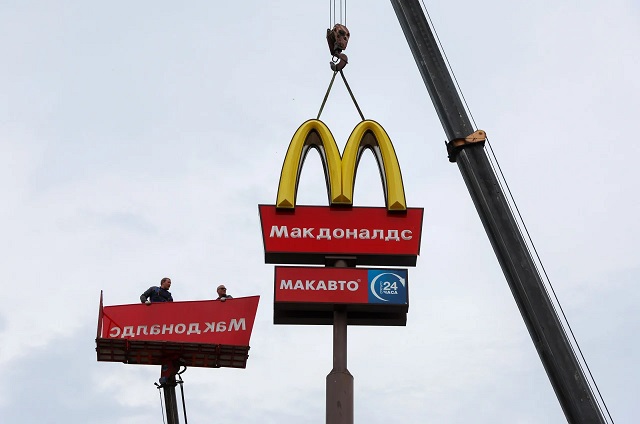 MCDONALD’S TOUGH BUT PROPER DECISION
MCDONALD’S TOUGH BUT PROPER DECISION
Exclusive: Inside McDonald’s months-long decision to sell all 853 stores in Russia – and lose a significant chunk of global revenue with them
By Geoff Colvin, FORTUNE MAGAZINE
New York, NY, Wed, Jul 27, 2022
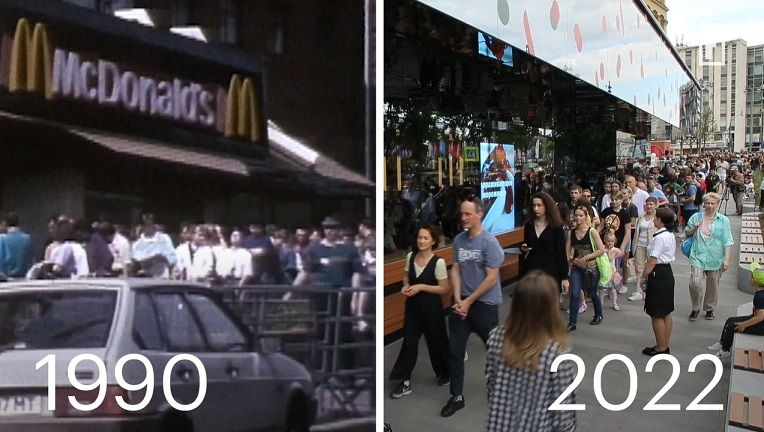
It was 4 a.m. in London on Feb. 24 when Ian Borden, McDonald’s president of international operations, texted urgent news to his boss, CEO Chris Kempczinski, in Chicago.
Vladimir Putin had announced Russia’s invasion of Ukraine an hour earlier, and attacks had begun in Kyiv, Kharkiv, Odesa, and elsewhere. Borden told Kempczinski the company’s 107 Ukraine restaurants had been closed, and an employee hotline had been set up.
In Chicago it was 10 p.m. Until then, Kempczinski, 53, had been watching the Ukraine situation like everyone else and doubting it would come to hostilities. “There seemed to be this sense of a lot of saber rattling. Surely this isn’t going to lead to any sort of invasion,” he recalls. Now he realized, “Okay, yeah—we’re in a different world.”
Over the following 81 days, Kempczinski would find his way to a decision that would reverberate through the lives of millions. It wasn’t a decision about the business in Ukraine; while vitally important, that call—shut down the restaurants, take care of the employees—was straightforward. No, the real question was about Russia, and whether McDonald’s would need to abandon an 853-store market that was both an economic boon and a powerful symbol of the company’s rise to become one of the most dominant global brands in history.
.jpg)
As part of the “de-Arching” process, workers remove a McDonald’s sign from a restaurant in Kingisepp, Russia, in June. Photo: Anton Vaganov – Reuters
He knew that whatever his decision, the repercussions would be immense. Most immediately, a stay-or-go call would affect the company’s 62,000 employees in Russia; nearly all the Russian restaurants were company-owned, not franchised, so most of those employees worked directly for McDonald’s. It would also impact the company’s finances. Russia contributed 7% of global revenue last year, a significant sum as sales continue to climb from a pandemic low.
More broadly, Kempczinski knew his decision could strengthen or injure McDonald’s brand and reputation. The fact that the company was recovering from an embarrassing scandal involving its former CEO, who was ousted for having an inappropriate relationship with an employee, added to the pressure. The saga sparked an internal debate over McDonald’s culture and values, and the company’s workforce would surely scrutinize Kempczinski’s choice through that lens.
Most broadly, the decision would be deeply symbolic. The opening of the first Russian McDonald’s restaurant in 1990 had been a global news event. With Communism crumbling and glasnost ascending, the Golden Arches’ arrival in Moscow heralded Russia’s opening to the outside world as it welcomed even this vigorously capitalist, exuberantly American institution. A decision to leave would signal that the West was retreating and the country reversing course, turning inward again.
As Kempczinski went to his office on Feb. 24, tackling those weighty issues was suddenly at the top of his to-do list.
Unlike all previous McDonald’s CEOs since founder Ray Kroc, Kempczinski didn’t come up through the company. Instead, he had risen through several of America’s elite educational and corporate management academies—Duke University, Procter & Gamble, Harvard Business School, Boston Consulting Group, PepsiCo, Kraft Foods—before joining McDonald’s in 2015. He advanced quickly to heading -McDonald’s USA, the company’s largest market, and became CEO in 2019. Four months later the pandemic hit, and he managed the company successfully through an unprecedented crisis. Now he faced another one.
First, he and his team extended the shutdown of the Ukrainian restaurants until further notice. All are company-owned. Having just come through COVID, the company knew “how to lock down a whole market very quickly,” Kempczinski says. No employees had been killed in the early days, but clearly no place was safe. The company says it is continuing to pay all Ukrainian employees.
The harder issue was Russia. Other organizations were moving fast, and McDonald’s wasn’t. On the first day after the invasion, Delta Air Lines announced it was suspending its alliance with Aeroflot. Formula 1 racing canceled its Russian Grand Prix, and the Union of European Football Associations moved its Champions League soccer final from St. Petersburg to Paris. Within a week, Apple, British Petroleum, Ikea, Meta Platforms (Facebook’s parent), Netflix, Nike, Shell, Volkswagen, and others had announced they would halt production, stop sales, close stores, or take other significant action. McDonald’s had made no announcements.
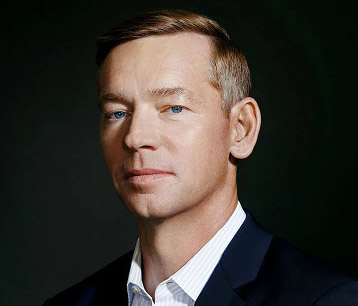
Between the pandemic and the Ukraine crisis, McDonald’s CEO Chris Kempczinski —who took the reins in 2019—has had an eventful tenure so far. Photo: Mackenzie Stroh for Fortune
A new digital-era element added pressure to act. Yale University’s nonprofit Chief Executive Leadership Institute launched a continuously updated online list of companies leaving and staying in Russia. The list’s curators, led by professor Jeffrey Sonnenfeld, didn’t hesitate to call out major companies that hadn’t acted. On CNBC a week after the invasion, he blasted McDonald’s for staying quiet, calling it “a screaming anomaly that’s bewildering to all its peers.”
The damage went beyond harsh words. Sonnenfeld’s list moved markets. After the CNBC spot, in which he cited several companies that hadn’t taken a stance on Russia, the share prices of many, including McDonald’s, dropped.
Fame is a blessing and an occasional curse for McDonald’s. The company says 85% of the U.S. population eats there at least once a year. In over 100 countries, it’s part of the culture. People are interested in what McDonald’s does or doesn’t do. Within days, #BoycottMcDonalds was trending on Twitter. New York State Comptroller Thomas DiNapoli, trustee of the state’s giant pension fund for employees, which owns McDonald’s stock, released a public letter to Kempczinski urging him to “consider pausing or ending its business operations” in Russia. Still, days passed with the company seemingly doing nothing.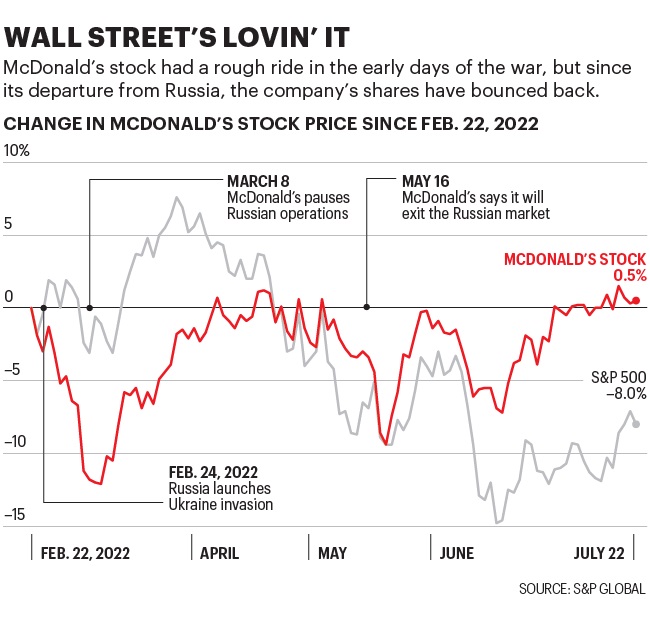
Behind the scenes, however, there was a flurry of activity. The company’s annual meeting of its top 50 executives went on as scheduled in Portugal at the beginning of March. The Russian team revealed that even Russian officials wanted to know what McDonald’s would do.
Complicating the decision significantly were sanctions imposed on Russia by the U.S. and other countries. Most important was a U.S. sanction on Russia’s largest financial institution, Sberbank, which would take effect on March 26. That was a problem for McDonald’s because many of its restaurants were in small towns. “In many cases, the only bank in town in rural Russia is Sberbank,” says Kempczinski. “We didn’t have the luxury of going to HSBC or Société Générale or one of those others.” As the Sberbank sanction drew closer, he says, “that’s when things for us tightened up quite a bit.”
Other CEOs were an important resource for Kempczinski as he tried to answer hard questions. “There were a lot of calls happening between multinationals,” he says. He won’t name the CEOs, but he says they would call one another frequently, comparing notes, sharing information, assessing where the situation was going, figuring out how to navigate through it. “That actually proved to be very helpful, to try to build a bigger picture of what exactly is going on.”
McDonald’s failure to quickly exit Russia led one critic to publicly blast the company as “a screaming anomaly that’s bewildering to all its peers.”
Internal discussions were growing intense. Kempczinski was in “hourly contact” with Borden, who had firsthand experience, having worked for the company in Russia and Ukraine. The board and Kempczinski spoke several times a week. He spoke often with CFO Kevin Ozan, in part because “we were looking at potentially having to do some significant write-offs,” and with general counsel Desiree Ralls–Morrison about the meaning of U.S. and European Union sanctions, many of which had been hastily written and were far from clear.
Meanwhile, the conflict’s future was getting murkier. Before the invasion, conventional wisdom held that Russia could defeat Ukraine in an eyeblink. U.S. intelligence estimated four days; British intelligence predicted the government would topple in five hours. But by the second week, the conflict increasingly looked set to drag on indefinitely.
To impose some structure on a problem that was morphing continually, Kempczinski focused on answering five questions: Legally, can we operate in the country? Do we have the freedom to operate? Is our decision helpful to our brand? Does our decision make good business sense? Does our decision align with our values? As the conflict approached its third week, Kempczinski says, “we started getting more yellows than greens on that list.”
Internal discussions were growing intense. Kempczinski was in “hourly contact” with Borden, who had firsthand experience, having worked for the company in Russia and Ukraine. The board and Kempczinski spoke several times a week. He spoke often with CFO Kevin Ozan, in part because “we were looking at potentially having to do some significant write-offs,” and with general counsel Desiree Ralls–Morrison about the meaning of U.S. and European Union sanctions, many of which had been hastily written and were far from clear.
Meanwhile, the conflict’s future was getting murkier. Before the invasion, conventional wisdom held that Russia could defeat Ukraine in an eyeblink. U.S. intelligence estimated four days; British intelligence predicted the government would topple in five hours. But by the second week, the conflict increasingly looked set to drag on indefinitely.
To impose some structure on a problem that was morphing continually, Kempczinski focused on answering five questions: Legally, can we operate in the country? Do we have the freedom to operate? Is our decision helpful to our brand? Does our decision make good business sense? Does our decision align with our values? As the conflict approached its third week, Kempczinski says, “we started getting more yellows than greens on that list.”
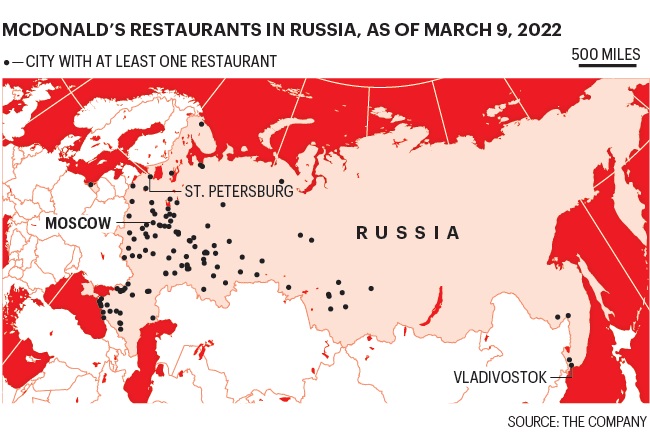
On March 8 he declared a time-out, a “pause” in operations. All the Russian restaurants would shut down “temporarily,” the company announced. For the first time, McDonald’s took a public stance on the conflict, saying it “has caused unspeakable suffering to innocent people … We cannot ignore the needless human suffering unfolding in Ukraine.”
All Russian employees would continue to be paid. The company had “a moral obligation” to them, Kempczinski said. There was also a “practical consideration. If we’re only paused for a month, and we reopen,” a fully trained workforce already on the payroll would be highly valuable.
The company’s announcement went out at 11 a.m. Chicago time. By the end of the day, Coca-Cola, PepsiCo, and Starbucks had also announced they were suspending sales and other operations in Russia.
It’s miraculous that McDonald’s ever had a major Russian business. Many competitors in the quick-service restaurant industry tried and failed to match its success in Russia. Yum Brands, owner of KFC, Pizza Hut, and Taco Bell, eventually had more Russian outlets, but nearly all were franchised, so their revenue to the parent was less than McDonald’s. Other competitors came and went without posing a threat.
McDonald’s gained a first-mover advantage in Russia that it never lost, thanks in large part to the head of the company’s Canadian business, George Cohon. He started courting Soviet officials in 1976 and wrangled with the mother of all bureaucracies for 14 years. Prevailing with the nomenklatura proved to be only half the battle. When the company finally got permission to open a restaurant in Moscow, it had to create an ecosystem of suppliers from scratch.
McDonald’s imported experts who taught farmers how to grow Russet Burbank potatoes for french fries and iceberg lettuce for garnishing burgers, and how to raise cattle to become McDonald’s-worthy beef. Bakers from the U.S. and Europe taught locals to bake hamburger buns at the 110,000-square-foot “McComplex”—located in the Moscow suburb of Solntsevo—which also processed beef and pasteurized milk.
The company had to build its own human capital as well. A restaurant worker who looks customers in the eye, smiles, and says thank-you was a concept unknown in Soviet Russia, but Russians were eager to learn. McDonald’s advertised for 630 jobs at the new restaurant—the world’s biggest McDonald’s at the time—and received 27,000 applications.
When the restaurant opened on Jan. 31, 1990, in Pushkin Square, just blocks from the Kremlin, Muscovites lined up for hours in the biting cold to visit this exotic newcomer from America. It was the ideal moment for McDonald’s to arrive. Many Russians were looking west for the way to a better life, and nothing in the world could be more Western and un-Soviet than McDonald’s. The new restaurant stayed open well past closing time on that first day, serving 30,000 customers.
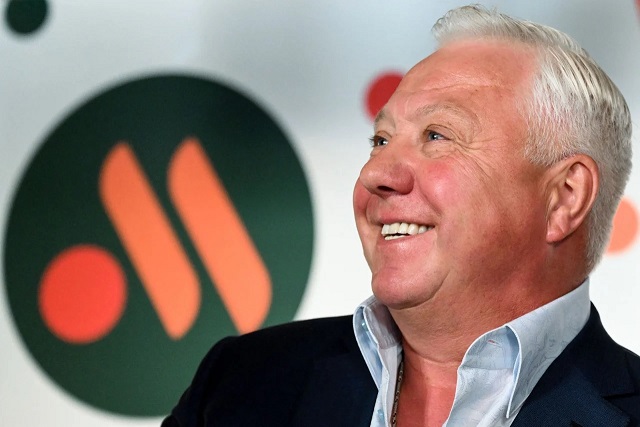
Alexander Govor, who operated 25 McDonald’s in Siberia, bought the company’s Russian business in May. Photo: Kirill Kudryavtsev – AFP/Getty Images
Most remarkable was the ease with which Russians brought McDonald’s into their culture. By the end of its first year, Fortune reported at the time, that initial McDonald’s restaurant was attracting three times more visitors than Moscow’s previous No. 1 attraction, Lenin’s tomb.
“Muscovites have publicly affirmed and embraced McDonald’s and its products as significant and meaningful elements in their social worlds,” wrote anthropologist Melissa Caldwell in 2004. To Russians, the company even ceased to be foreign. “For many Muscovites, McDonald’s has become so ordinary that it is no longer culturally marked,” she wrote. It had become nash, Russian for “ours.”
But now, 32 years later, could the unique relationship continue? Before the March 8 pause, McDonald’s Russia had been a good business. After that date it was bringing in zero revenue while continuing to pay employees and landlords. CFO Ozan told a Wall Street conference, “We believe that [the costs] will be roughly around $50 million a month.” Kempczinski now had to face the stay-or-go decision head-on.
He would be making the call under an especially bright spotlight. For five years McDonald’s had been holding an internal conversation about the company’s culture and values. It began when Steve Easterbrook, former head of the company’s U.K. and northern Europe businesses, became CEO in March 2015. The company badly needed fixing, and his hard-charging response included a cultural overhaul. In one change broadly seen as symbolic, he publicly banned the use of “McFamily” to describe the company’s workforce, in favor of a new term, McTeam. Many employees didn’t like that.
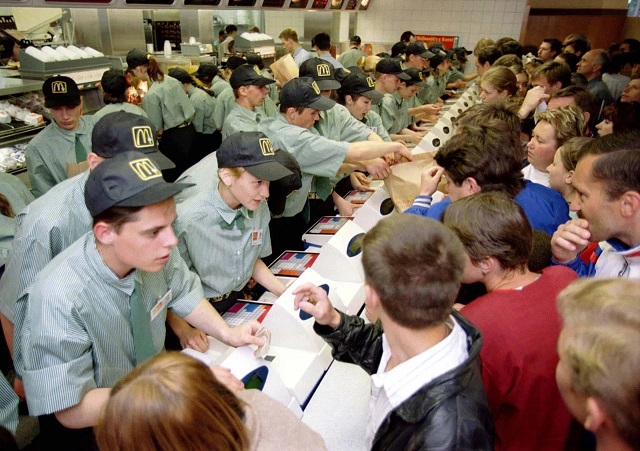
A busy day at the 1997 opening of the first McDonald’s in Kyiv, Ukraine. Photo: Reuters Pictures
Some aspects of his shake-up worked; the company’s market value grew by more than $50 billion, or 78%, by November 2019. But that’s when the corporate culture again became a hot topic, as Easterbrook was abruptly fired for violating company policy by sexting with an employee.
The board named Kempczinski his successor. Employees had reason to be wary of this relative outsider, but he didn’t inflame the culture debate. Instead, he brought back McFamily and told employees about his strong Catholic upbringing and the values that came with it. He launched a monthslong project to restate the company’s purpose and values—“We put our customers and people first,” for example, and “We do the right thing”—and publicized the effort in a TV advertising campaign.
Now 2.2 million McDonald’s employees, plus millions of consumers who saw the ads, would be watching Kempczinski to see if the company lived up to its words.
Internally there wasn’t always consensus on what those values meant. Putting our customers and people first? To some employees that meant continuing to feed customers and employ 62,000 Russians. “And then a different group of employees would say no, what we’re doing over there is supporting this war effort,” Kemp-czinski recalls. “That’s not doing the right thing.”
The days rolled by, winter turned to spring, and other companies announced their exits from Russia: Warner Bros., Universal, and Sony stopped releasing films there; Disney halted all business in the country; Goldman Sachs and JPMorgan started winding down. Still no word from McDonald’s.
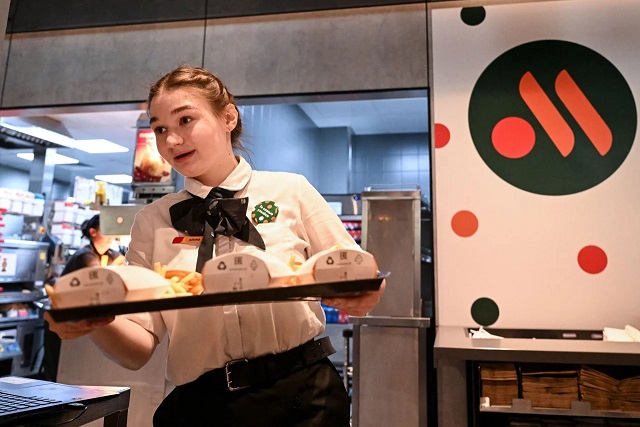
A former Russian McDonald’s—now called Vkusno-i Tochka – in June 2022.
Photo: Kirill Kudryavtsev – AFP/Getty Images
Kempczinski says he was not going to be hurried: “My general approach on leadership stuff is, don’t make a decision until you absolutely have to make a decision. If you have the ability to buy yourself more time to get some more information, why wouldn’t you take advantage of that?” He was aware of the external pressure but insists he’d rather “be a little slower than rush and get it wrong. Because the ramifications of getting it wrong are so significant for us.”
The ramifications were much larger for McDonald’s than for many other Western companies in Russia. Unlike consulting firms and law firms that exited quickly, for example, McDonald’s had hard assets in the country—buildings, vehicles, machinery. The Russian operations of many companies were so small that the cost of abandoning them would be immaterial. But for McDonald’s, Russia was material. With Wall Street analysts debating whether the company’s total 2022 revenue would grow 6.2% or 6.3%, lopping off 7% of revenue would not be a step lightly taken.
Arguably the largest ramification for McDonald’s, a values issue, concerned the Russian employees. McDonald’s restaurant employees in Russia, unlike in the U.S., tended to stay for years. “We had a woman on the leadership team in Russia who [started by running] the cash register at store No. 1 in Pushkin Square, and she’s been at the company ever since,” says Kempczinski. “She’s put her whole life in this thing.” Weighing a decision to leave, “you’re thinking about what you’re going to say to them.”
Complications multiplied. In April, President Biden signed an executive order prohibiting new investment in Russia by U.S. companies and prohibiting exportation of services. Could McDonald’s send money for its own restaurants? Could it perform routine services (training, marketing) for franchisees?
Kempczinski kept going back to those five questions. “We just got to a point where we felt the answer to each of those was a hard no,” he recalls. “It wasn’t a maybe. It was a hard no.”
Some Russian employees have been with McDonald’s their entire careers. “You’re thinking about what you’re going to say to them.”
MCDONALD’S CEO CHRIS KEMPCZINSKI
At last the answer was clear. McDonald’s would have to leave Russia. But the problem still wasn’t solved: How the company departed would be important. To honor its values, it couldn’t summarily fire those 62,000 workers. In addition, there was no telling if or when it might be possible to return; walking away from 853 locations and abandoning a vast network of suppliers was clearly not the optimal way to exit.
On May 16, McDonald’s announced the departure. “Continued ownership of the business in Russia is no longer tenable,” the company said, “nor is it consistent with McDonald’s values.”
It also said it had “initiated a process to sell its Russian business” and three days later announced the buyer: Alexander Govor, a wealthy businessman and McDonald’s licensee who operated 25 restaurants in Siberia. (The company has not disclosed the sale price but took a $1.3 billion charge to earnings related to the sale.) The contract requires him to retain all restaurant employees “for at least two years on equivalent terms.” He cannot use the McDonald’s name, logo, brands, or menus; McDonald’s is retaining all its trademarks in Russia. The “de-Arching” process began immediately, and the restaurants are reopening under a new name, Vkusno-i Tochka, which translates as “Tasty and That’s It.” The new logo purportedly represents two french fries and a burger, but it certainly looks like an M.
Public criticism of the May announcements is hard to find. Nor has Wall Street punished the company for taking its time; the stock has lately been near all-time highs. McDonald’s is even on good terms with Jeffrey Sonnenfeld. “They never got mad at me or were defensive,” he says. “They listened.”
Officially, McDonald’s does not talk about returning to Russia. But Kempczinski would clearly love to. In reflecting on the company’s Russian business, he still occasionally slips into the present tense. “The Russian employees are some of our best employees,” he says. “Or they were some of our best employees.”
Kempczinski spent nearly three months making a painful decision that was freighted with more complications than outsiders realized. The decision he made will put him on the right side of history. At the same time, he doesn’t hide his wish that the day may come when going back to Russia will be the right thing to do. “Let us not end by saying goodbye,” he wrote in an email to employees. “Instead, let us say as they do in Russian: ‘Until we meet again.’ ”
This article appears in the August/September 2022 issue of Fortune with the headline, “The long goodbye: Inside McDonald’s agonizing decision to leave Russia.”
LINK: https://fortune.com/2022/07/27/mcdonalds-closing-all-stores-russia-revenue-employees/
JOIN THE U.S.-UKRAINE BUSINESS COUNCIL (USUBC), www.USUBC.org











